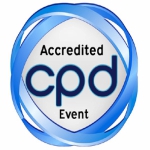
Alan B Moy
The John Paul II Medical Research Institute and Cellular Engineering Technologies, USA
Title: A robust reprogramming approach to create viral-free and oncogene-free, orphan-disease specific induced pluripotent stem cells from peripheral blood mononuclear cells
Biography
Biography: Alan B Moy
Abstract
Innovations are needed to reduce the time, cost and failure rate of drug discovery. 58% of new molecular entities approved by the FDA in the past ten years have utilized phenotypic screening; a drug screening process that uses patient-specific cultured cells that reflect the patient’s diseased characteristics. Induced pluripotent stem cells (IPSC) are excellent patient-specific stem cells for phenotypic drug screening platforms for orphan disease. Disease-specific IPSC has the advantage over prior conventional approaches to better predict drug efficacy and safety and for patient stratification in clinical trials. Yet, one major hurdle in creating disease-specific IPSC for infants and children has been developing reliable methods to reprogram target cells derived from peripheral blood, which is the ideal minimally invasive approach to transform target cells. However, efficient reprogramming of peripheral blood mononuclear cells has not been achieved without viral and the oncogenes, c-Myc and Lin28. These oncogenic transcriptional factors and viral elements may alter the native phenotype of a patient’s cell and skew drug screening outcomes. We have solved this problem by developing a combinatorial approach of small molecules and a novel episomal construct to reprogram adherent cells and peripheral blood mononuclear cells. While the combinatorial approach is efficient for reprogramming adherent cells, the approach requires an additional intermediate conversion of peripheral mononuclear cells (PMNC) into CD34+ hematopoietic stem cells. PMNC were exposed to a defined tissue cultured media that converted PMNC into a sufficient number of hematopoietic stem cells. Upon conversion to hematopoietic stem cells, IPSC reprogramming became feasible. Without an intermediate hematopoietic stem cell conversion, we observed no IPSC colony formation. The opportunity now exists to develop a repository of IPSC for infants and children suffering from orphan diseases from a simple venipuncture, which should accelerate hit to lead identification, drug optimization and drug formulation.

